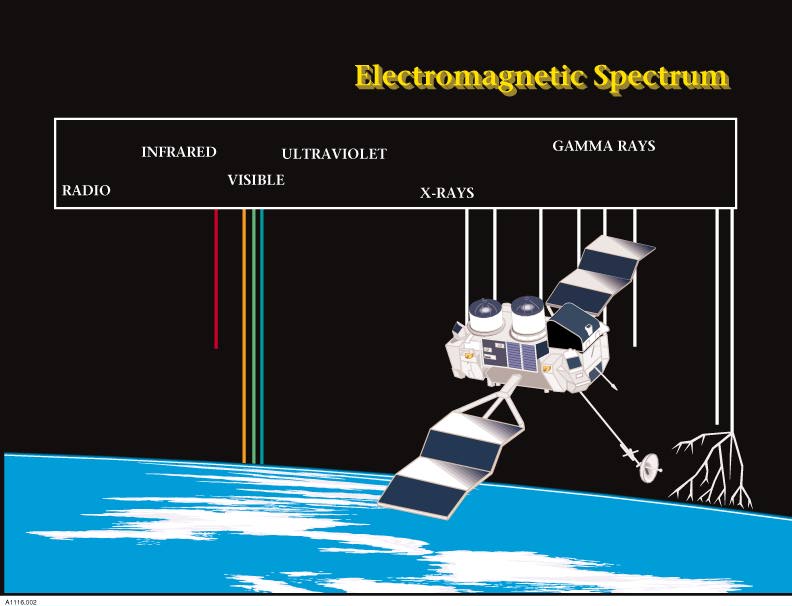| Looking into the night sky,
one sometimes feels that the visible Universe is a calm, comfortable place.
NASA's Compton Gamma Ray Observatory looks at a very different cosmos.
This is the Universe viewed through gamma-ray photons, the highest energy
portion of the electromagnetic spectrum. This is a place of explosive energy,
cosmic particle accelerators, and exotic environments such as collapsed
stars and mysterious bursters. A place of nuclear decays, particle collisions,
extraordinary temperatures, and violent explosions. For the first time,
the entire sky has been comprehensively studied using this high-energy
radiation. From the Sun to the furthest galaxies - from diffuse clouds
of interstellar gas to the cores of powerful, gigantic black holes - the
Compton Observatory has reshaped the way scientists view nature. |
Each gamma-ray photon (which is the basic "piece" of light, much like
electrons are one of the basic pieces of normal matter), carries at least
10,000 times the energy of a common photon of visible light. This energy
is usually measured in electron- volts (or eV). A typical optical photon
has around 2 or 3 eV's of energy. The gamma-ray spectrum begins at energies
of around 50,000 eV (or 50 keV) and extends up to 1 TeV (1,000,000,000,000
eV) or even higher!

The window provided by gamma-ray astronomy gives researchers valuable
information about a wide variety of astrophysical phenomena, information
which is impossible to get by other means. The high-energy part of the
electromagnetic spectrum reveals information about nuclear interactions
and decays, about how elementary particles are created and accelerated
in astrophysical sources, and clues to the origin of cosmic rays. |
Gamma rays are not easily scattered or destroyed. So once created,
gamma rays can provide unambiguous information about very important astrophysical
environments. Over the years, astrophysicists have realized that in order
to fully understand nature, one must observe in as many ways as possible
to provide a unified view. With the launch of the Compton mission, gamma-ray
astronomy has, for the first time, become an integral part of this multi-wavelength
approach. This success did not come quickly or easily. Gamma-ray astronomy
is a very difficult discipline to pursue for several reasons. First, it
cannot be accomplished from the ground like radio or optical astronomy.
The earth's atmosphere is opaque at gamma-ray energies. Cosmic gamma rays
are absorbed high up in the atmosphere. Only at the highest energies are
gamma rays detectable from the ground, through the large showers of particles
caused by interaction with the atmosphere. Also, gamma rays are scarce.
Even the brightest sources emit relatively few photons at these energies
as compared to other energy bands. The Crab pulsar, a bright source, emits
about one gamma-ray photon for every 10,000 optical photons. |

